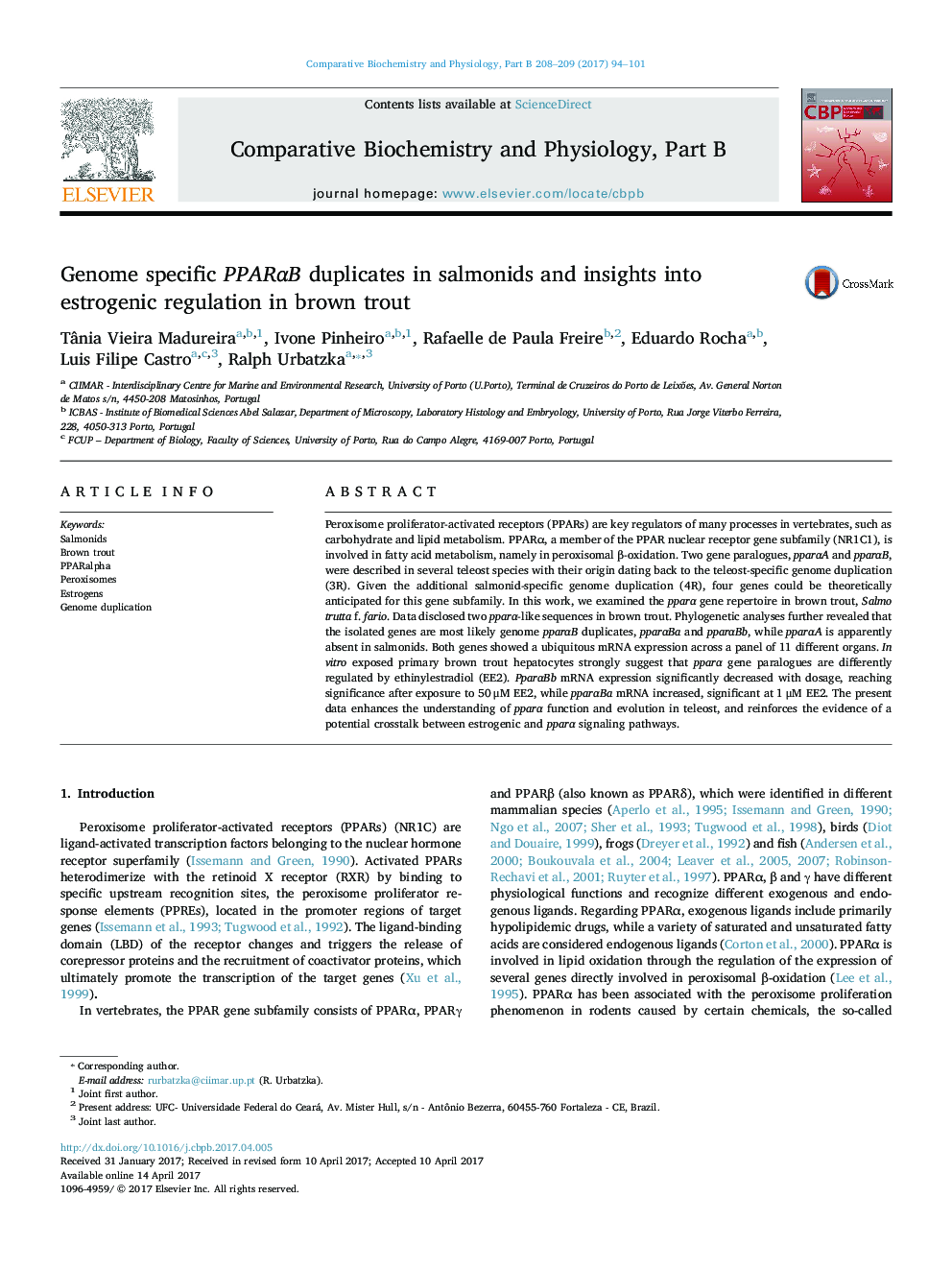| Article ID | Journal | Published Year | Pages | File Type |
|---|---|---|---|---|
| 5510465 | Comparative Biochemistry and Physiology Part B: Biochemistry and Molecular Biology | 2017 | 8 Pages |
Peroxisome proliferator-activated receptors (PPARs) are key regulators of many processes in vertebrates, such as carbohydrate and lipid metabolism. PPARα, a member of the PPAR nuclear receptor gene subfamily (NR1C1), is involved in fatty acid metabolism, namely in peroxisomal β-oxidation. Two gene paralogues, pparαA and pparαB, were described in several teleost species with their origin dating back to the teleost-specific genome duplication (3R). Given the additional salmonid-specific genome duplication (4R), four genes could be theoretically anticipated for this gene subfamily. In this work, we examined the pparα gene repertoire in brown trout, Salmo trutta f. fario. Data disclosed two pparα-like sequences in brown trout. Phylogenetic analyses further revealed that the isolated genes are most likely genome pparαB duplicates, pparαBa and pparαBb, while pparαA is apparently absent in salmonids. Both genes showed a ubiquitous mRNA expression across a panel of 11 different organs. In vitro exposed primary brown trout hepatocytes strongly suggest that pparα gene paralogues are differently regulated by ethinylestradiol (EE2). PparαBb mRNA expression significantly decreased with dosage, reaching significance after exposure to 50 μM EE2, while pparαBa mRNA increased, significant at 1 μM EE2. The present data enhances the understanding of pparα function and evolution in teleost, and reinforces the evidence of a potential crosstalk between estrogenic and pparα signaling pathways.
